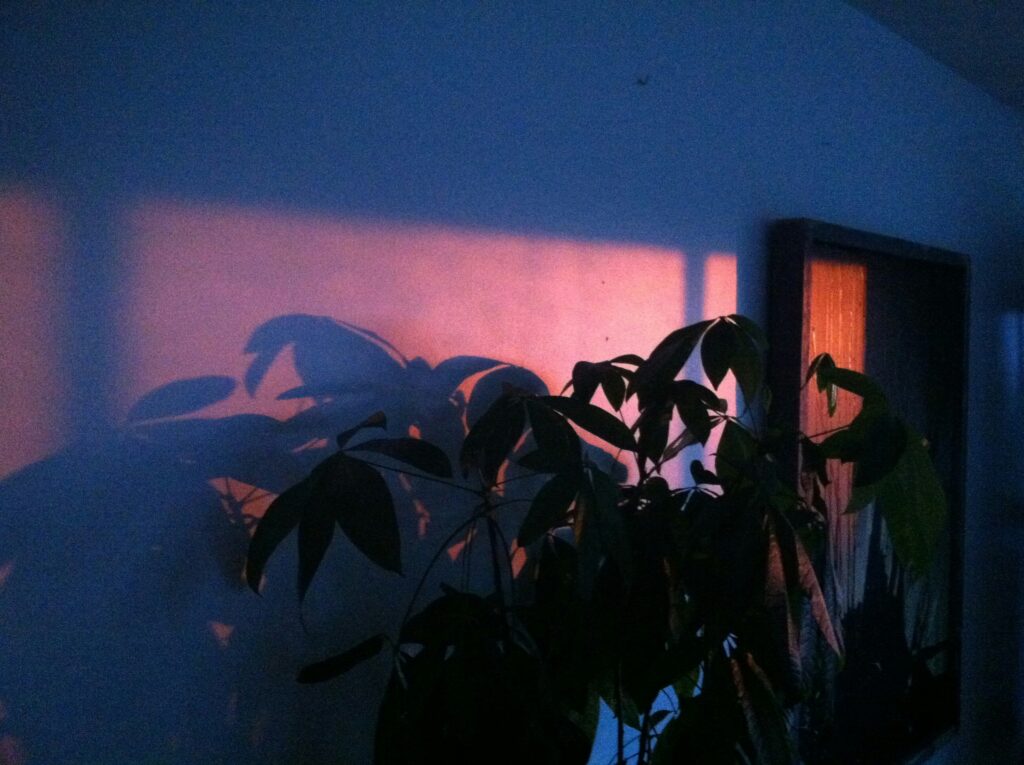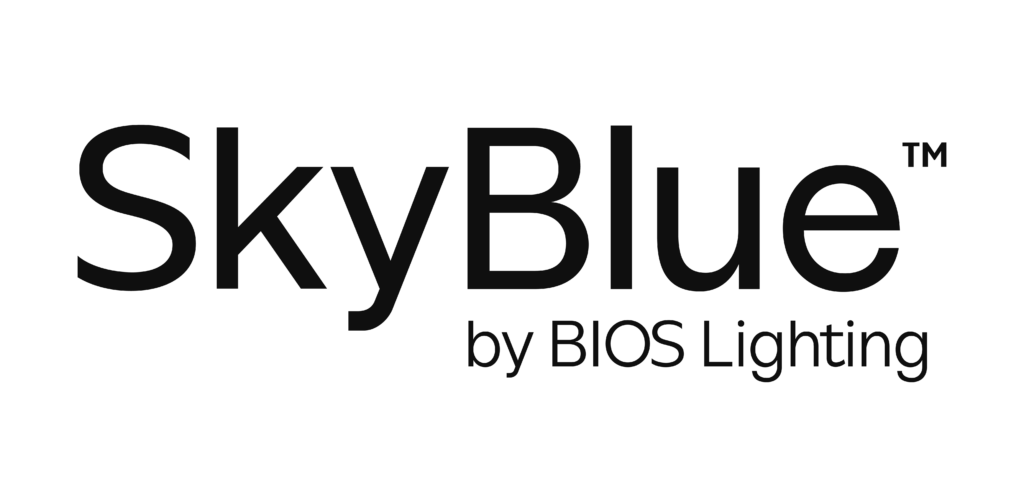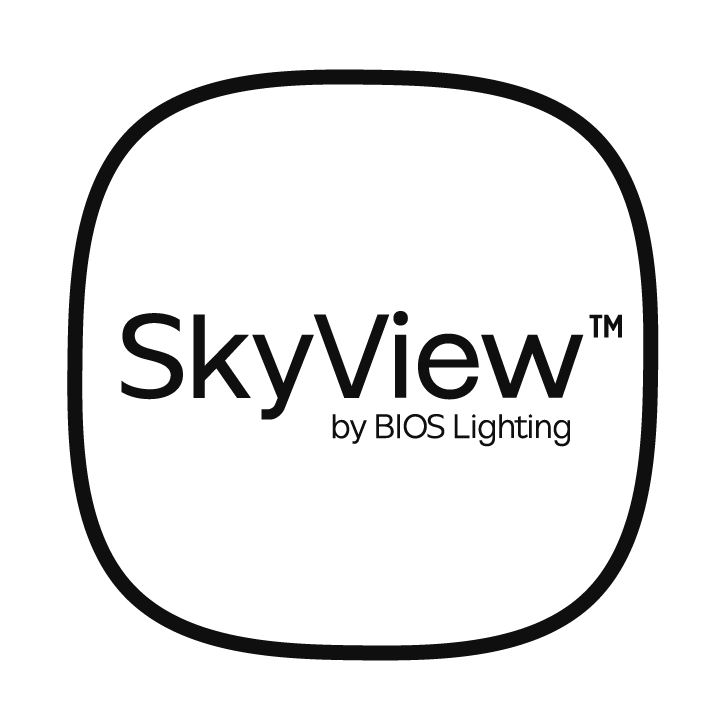What is Mood Lighting?
Adapting the lighting in your environment is remarkably beneficial and, better yet, easy to do. Many businesses already use lighting to influence behavior: grocery stores often feature bright light to energize customers and encourage quick decisions, while restaurants opt for dim ambient lighting to create intimacy and comfort.
While these choices are primarily for atmosphere, they also produce measurable physiological effects. The right lighting intensity and spectrum can influence cortisol levels, melatonin production, heart rate, and emotional state (See review by Vetter et al. 2021). In general, bright lighting can elevate arousal and energy, while warmer, dimmer light may promote calmness and relaxation.
We’ve all experienced discomfort in overly dim restaurants or excessively bright stores. That’s because designers often light for “mood” without understanding the science behind human-centric lighting. With a basic understanding of our mind and body’s responses to light, we can optimize lighting for both emotion and biology.
How does Lighting Affect our Moods And Behavior?

Whether waking up, powering through work, or preparing for rest, we should be conscious of the effects light has on our mood—and how to use it to our advantage.
Positive Moods
Exposure to bright, blue-enriched light has been shown to significantly improve mood and reduce symptoms of depression (Viola et al. 2008). Natural daylight exposure increases serotonin, a neurotransmitter linked to happiness and emotional stability. Studies have shown that light therapy can be as effective as antidepressants in some cases, especially for Seasonal Affective Disorder (SAD) (Dollish et al. 2024).
Focus and Alertness
Light also strongly impacts our levels of alertness and our ability to focus on a task. Blue and white light influence the body’s internal clock via melanopsin-containing retinal ganglion cells, which help regulate circadian rhythms and alertness (Lucas et al. 2001).
Morning light, especially in the blue spectrum (~490 nm), increases wakefulness by suppressing melatonin and triggering the release of cortisol (Figueiro & Rea 2010). This is why turning on bright, cool lighting in the morning can boost mental sharpness—potentially replacing that second cup of coffee.
Focus and Alertness have been shown to be strongly influenced by exposure to blue and white light in numerous studies, but it’s also something that tends to be naturally apparent. How do you tend to feel on a blue-sky day? In the same vein, have you ever tried to sleep with the lights on? It’s harder of course! This is because our brain associates light with daytime and in effect increases alertness.
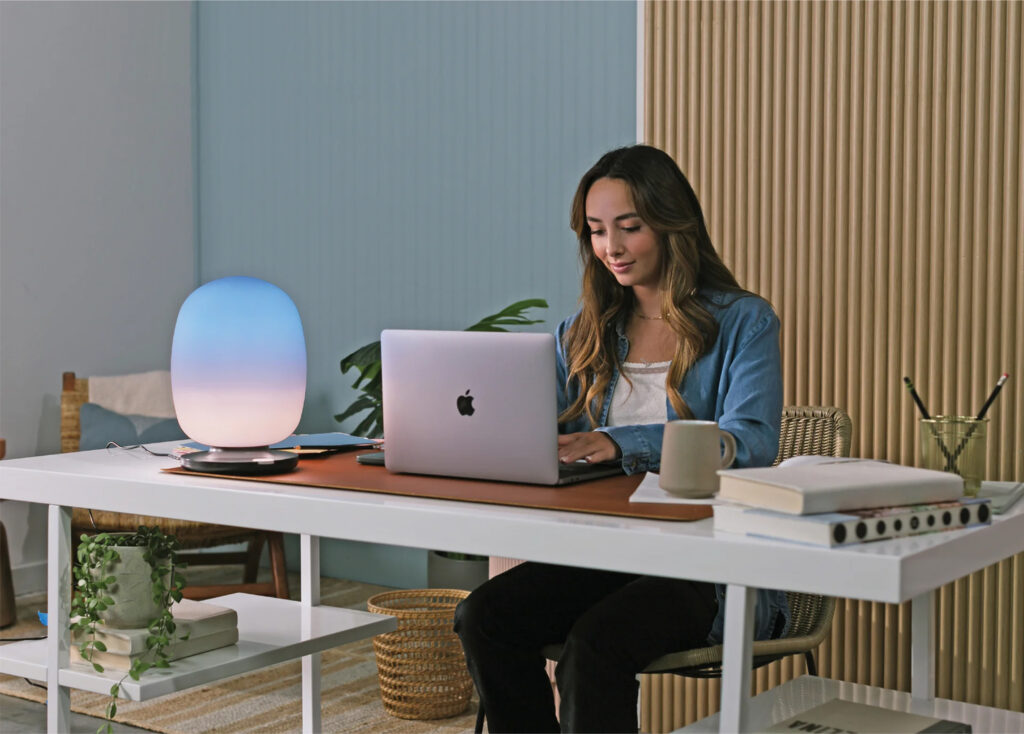
Feeling Productive
Workplace lighting significantly influences feelings of productivity. Studies show that environments lit with blue-enriched white light improve focus, cognitive performance, and mood among office workers (Mills et al. 2007; Grant et al. 2023).
If you don’t work near natural light, using LED lights with a high melanopic daylight efficacy ratio (M-DER) is a great solution. This is most efficiently delivered using true circadian lighting, which is scientifically designed to deliver biologically active sky-blue light during the day, promoting alertness and sustained energy.
Rest and Relaxation
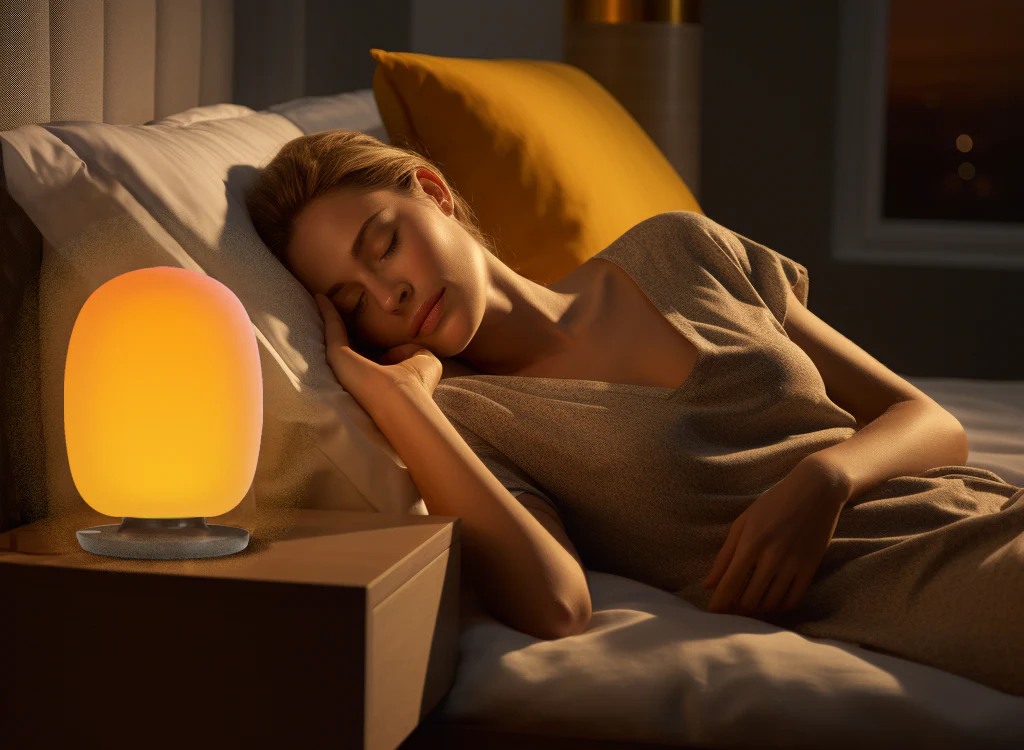
At night, our brain and body’s needs shift. The natural decline of blue-sky light with the setting sun begins our physiological transformation. Among the many gene expression and endocrine changes, we naturally begin producing melatonin, a hormone that tells our body it’s time to sleep. Excessive blue light exposure by electronics and artificial light stunts this process which affects our sleep cycle and quality of sleep overall. It also disrupts our hormone production (and our circadian rhythm), leading to a boost in stimulatory hormones- just when we least need them (Chang et al. 2015).
Frequent blue light exposure at night is associated with increased cortisol production, which keeps us alert, while long-term exposure causes circadian disruption that contributes to anxiety, mood swings, weight gain, and even metabolic disorders (Fishbein et al. 2021).
To encourage better rest, avoid screens for at least an hour before bed and switch to dim red or amber lighting. Using dimmer, red-spectrum lighting in the evening helps signal to the brain that it’s time to wind down. Red light has minimal impact on melatonin production and is ideal for pre-sleep routines.
How is Mood Lighting Different from True Circadian Lighting?
Color-changing “mood lighting” may create visually pleasing environments, but it is not true circadian lighting and lacks the biological impact needed to support health. Mood lighting typically shifts between colors for aesthetic effect without delivering the precise spectrum and intensity of light—especially sky-blue wavelengths around 490nm—required to stimulate the body’s circadian system. True circadian lighting, in contrast, is designed to provide biologically effective light during the day and eliminate disruptive blue light at night. Without the proper spectral content and timing, mood lighting cannot regulate melatonin, cortisol, or sleep cycles, and therefore does not offer the same health benefits.
Adjusting our Circadian Cycle with Intentional Lighting
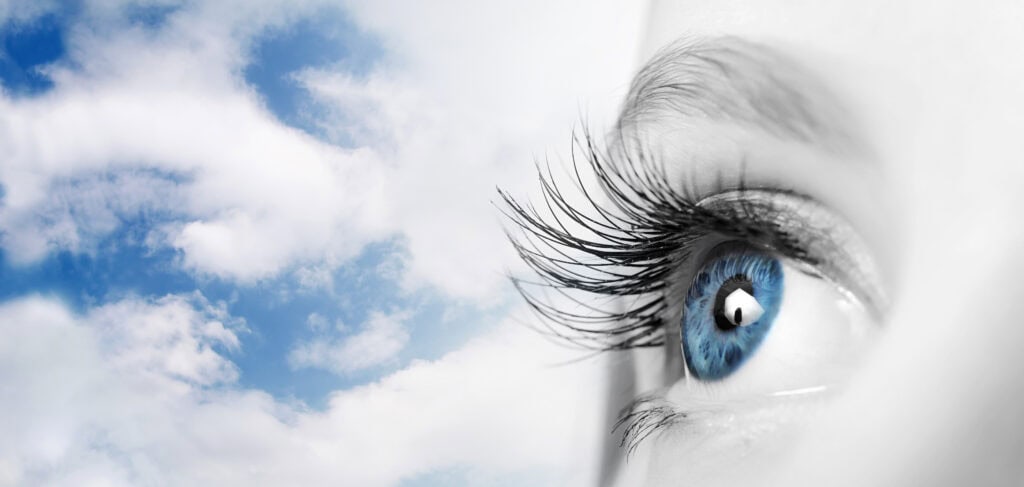
Humans evolved under natural sunlight during the day and darkness at night. The modern world, however, disrupts this balance with 24/7 lighting and screen exposure. Our circadian cycle is regulated by light, particularly sky-blue wavelengths that activate the brain’s master clock in the suprachiasmatic nucleus (SCN) (Duffy & Czeisler 2009). Aligning our lighting exposure with this rhythm helps us wake up refreshed, stay productive throughout the day, and sleep better at night.
So, the trick then is to mimic the daily natural light spectra changes indoors.
Get daytime adequate exposure to blue-rich light to improve mood and increase alertness and energy. Get evening exposure to red or amber light (with reduced blue light) to promote melatonin production, relaxation, and better sleep. When we recover properly from sleeping well, we are more likely to be in a better mood come morning with more energy and focus. Keeping this daily rhythm of light is crucial for maintaining hormonal balance, metabolism, mood, and cognitive health.
Optimizing light exposure at home and work is one of the simplest yet most powerful tools we have to support our mental and physical well-being.
Lighting for Mood, Focus and Alertness: The Power of True Circadian Lighting
Most commercially labeled “circadian lighting” focuses on color changes (cool to warm) but fails to deliver the sky-blue light intensity needed to entrain circadian rhythms during the day—or to fully eliminate blue light at night.



BIOS Lighting’s SkyView™ circadian lighting and lamps offer a scientifically validated, human-centric lighting system that supports your body’s natural biological rhythms. Developed by former NASA scientist Robert Soler, SkyView™ uses Gradient Circadian Optimization (GCO™) technology to deliver the right light at the right time. The result is true circadian lighting, with sufficient blue-sky melanopic light at minimal glare and low energy consumption.
SkyView™ isn’t “mood lighting”—it’s biologically optimized lighting that syncs with your natural light-dark cycle to naturally improve mood, focus, and alertness.
Lighting for Mood FAQs:
Can light really affect my mood?
Yes. Blue-rich light increases alertness, focus, and productivity. Warm, red-toned light promotes relaxation and melatonin production.
Why is blue light bad at night?
The body’s response to blue sky light is much the same as daylight. This causes us to be more alert when we should be winding down- in particular, it suppresses the sleep-related hormone melatonin while it boosts cortisol production, a stress hormone that makes us feel alert and awake.
Does the type of light I work in really affect me?
Yes, working in poor lighting can cause eye strain and drowsiness, whereas working in sky-blue enriched light enhances mood, focus, attention that promotes productivity and energy.
Do color changing “mood lights” work?
Color changing lights might be pretty to look at, but almost all do not provide adequate melanopic light to set and maintain your circadian rhythm.
Does circadian lighting work?
Like color changing mood lighting, most commercial “circadian lights” do not provide enough blue sky light without being uncomfortable and glary like therapy lamps. SkyView™ circadian lighting provides the needed melanopic light while limiting overall brightness because of their patented color separation technology. The light created appears natural just like what you view outdoors, where blue sky and earth tones meet.
References
Chang AM, Aeschbach D, Duffy JF, Czeisler CA. Evening use of light-emitting eReaders negatively affects sleep, circadian timing, and next-morning alertness. Proceedings of the National Academy of Sciences. 2015 Jan 27;112(4):1232-7.
Chang AM, Aeschbach D, Duffy JF, Czeisler CA. Evening use of light-emitting eReaders negatively affects sleep, circadian timing, and next-morning alertness. Proceedings of the National Academy of Sciences. 2015 Jan 27;112(4):1232-7.
Chang AM, Aeschbach D, Duffy JF, Czeisler CA. Evening use of light-emitting eReaders negatively affects sleep, circadian timing, and next-morning alertness. Proceedings of the National Academy of Sciences. 2015 Jan 27;112(4):1232-7.
Figueiro MG, Rea MS. The effects of red and blue lights on circadian variations in cortisol, alpha amylase, and melatonin. International journal of endocrinology. 2010;2010(1):829351.
Figueiro MG, Rea MS. The effects of red and blue lights on circadian variations in cortisol, alpha amylase, and melatonin. International journal of endocrinology. 2010;2010(1):829351.
Grant LK, Crosthwaite PC, Mayer MD, Wang W, Stickgold R, St. Hilaire MA, Lockley SW, Rahman SA. Supplementation of ambient lighting with a task lamp improves daytime alertness and cognitive performance in sleep-restricted individuals. Sleep. 2023 Aug 1;46(8):zsad096.
Lucas RJ, Douglas RH, Foster RG. Characterization of an ocular photopigment capable of driving pupillary constriction in mice. Nature neuroscience. 2001 Jun;4(6):621-6.
Mills PR, Tomkins SC, Schlangen LJ. The effect of high correlated colour temperature office lighting on employee wellbeing and work performance. Journal of circadian rhythms. 2007 Dec;5:1-9.
Vetter C, Pattison PM, Houser K, Herf M, Phillips AJ, Wright KP, Skene DJ, Brainard GC, Boivin DB, Glickman G. A review of human physiological responses to light: implications for the development of integrative lighting solutions. Leukos. 2022 Jul 3;18(3):387-414.
Viola AU, James LM, Schlangen LJ, Dijk DJ. Blue-enriched white light in the workplace improves self-reported alertness, performance and sleep quality. Scandinavian journal of work, environment & health. 2008 Aug 1:297-306.

